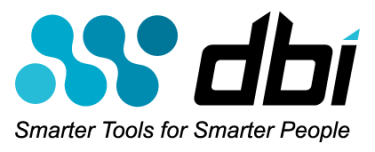You run a complicated business. Making hasty changes to anything could have unforeseen and profoundly-negative consequences. How do you solve problems without complicating them further?
| Like me, you’ve watched this scene in the movies a hundred times (well, maybe a thousand times if you have Netflix): there’s a bomb, a timer counting down rapidly, and a sweaty guy with a pair of wire cutters. |  |
 |
The guy with the wire cutters knows (either just because he knows or because his sidekick is telling him) that if he cuts the wrong wire, not only will it not solve the problem, it will result in him being instantly blown to smithereens. So what does our hero do? He somehow gets the right information, and takes the right course of action - at the last possible moment. |
Here’s what we do in my business - and I’m convinced that it will work in your business too:
- Identify your biggest problem first. Our patented, award-winning software does this for our clients in the database world. We send over three small SQL scripts, and in about 15 seconds we know the biggest database problem. Don’t rest until you know the biggest problem. It can be tempting to work on just any problem, but you’ll waste time if you do. Think of it this way: if you come to the emergency room with symptoms of a stroke - and a blister on the ball of your right foot - it doesn’t make much sense to treat the blister first. In fact it’s malpractice.
- Implement the solution to fix the problem. You may have discovered a bunch of problems in the identification phase. Good on you - but for now only work on the biggest one.
- Document exactly what you did to fix the problem. If the fix works, it’s a big timesaver to document what you did in case a similar problem crops up in the future. But if it doesn’t work, then you know exactly what must be rolled back and restored.
- Test to make sure that you really solved the problem. You need specific data - not just anecdotal evidence or your feeling of relief. You should be able to say that since implementing the fix, there has been some quantifiable improvement.
- Observe to see if your fix broke anything else. If it did, either fix that as well or roll back the change. Once you’re satisfied that the fix increased performance and didn’t hurt anything else, you’re ready for the next step, which is …
- Tackle the next problem.
What You Must Know
“Slow” solutions are the best way to achieve rapid results.

|
What would your business be like if it ran 4x faster? We'll present a methodology and key metrics to help you achieve rapid, measurable, and significant performance gains in your DB2 LUW databases in minutes! Register Now for a Free Webinar. |

